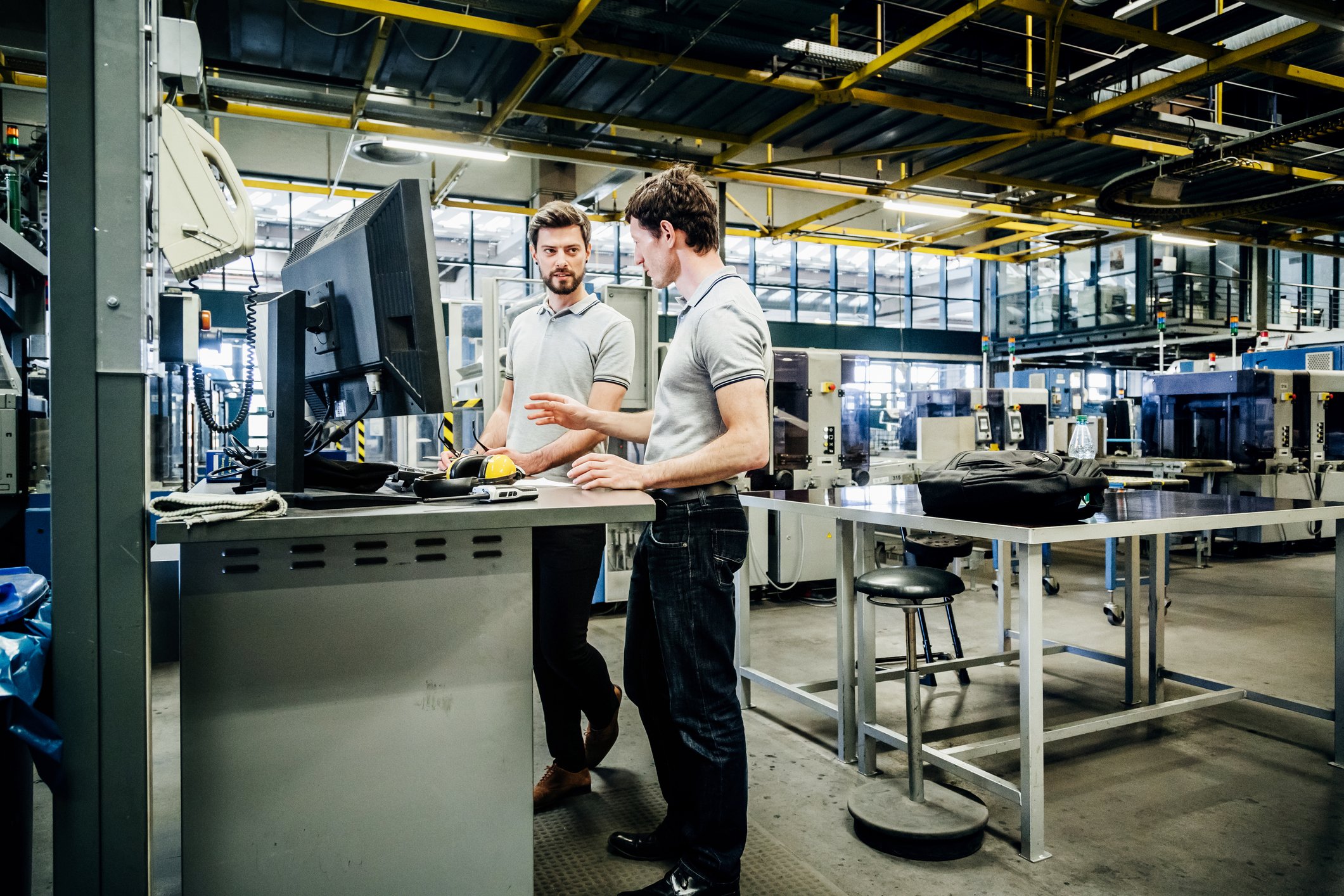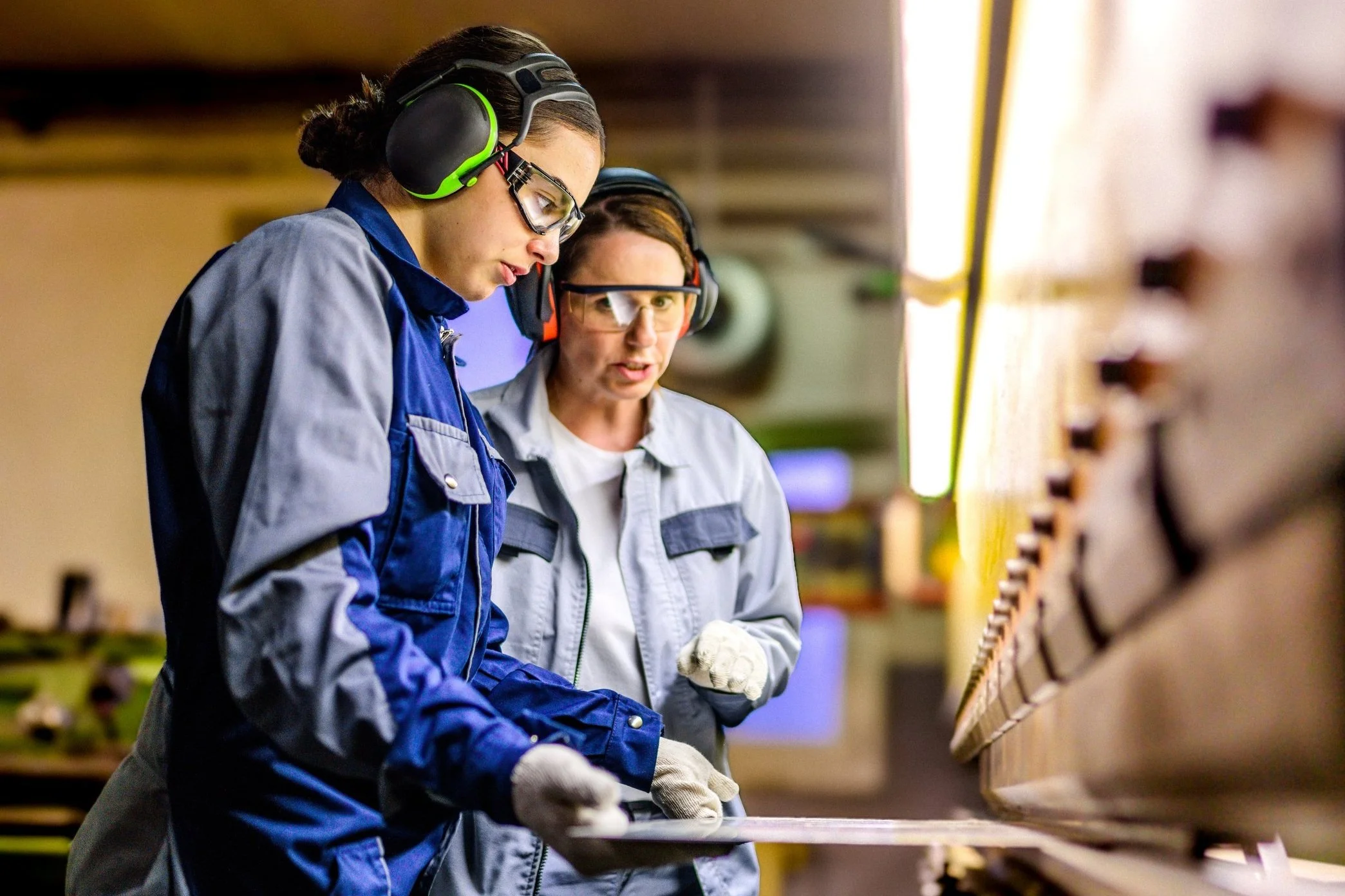Bridging the Skills Divide: Preparing America's Workforce for the Future of Manufacturing and Technology
A joint publication by Shree Parikh, Lead, Insights & Strategic Content – U.S. Center for Advanced Manufacturing,
and Vikrant Viniak, former Senior Managing Director – Accenture
Introduction
The United States stands at a transformative crossroads, witnessing historic investments exceeding $430 billion in new manufacturing facilities and clean energy projects driven by landmark legislation, including the Infrastructure Investment and Jobs Act and the CHIPS and Science Act[1]. Yet, despite these significant strides, the nation faces a profound workforce challenge—an acute shortage projected at 3.8 million manufacturing jobs needed by 2033[2][3]. Addressing this dual challenge—upskilling tech talent and expanding vocational pathways—is essential to maintaining U.S. competitiveness and economic vitality.
Vikrant Viniak, former Senior Managing Director at Accenture, contributes that it will not only help businesses to grow but also provide high-quality jobs to millions of Americans who may not view a traditional college education as the right path to prosperity for them.
The National Skills Gap in Manufacturing
America's manufacturing renaissance is at risk of faltering due to a persistent and widening skills gap[2]. As of April 2025, the U.S. Bureau of Labor Statistics reported 381,000 open manufacturing jobs, down from over 490,000 in April 2024, yet still representing significant unmet demand[4]. Looking ahead, research from Deloitte and The Manufacturing Institute projects that 1.9 million manufacturing jobs could go unfilled by 2033, with the economic cost of these vacancies potentially exceeding $1 trillion in lost output by the end of the decade[2][3].
This challenge is not merely a matter of numbers—it is a direct threat to U.S. productivity, innovation, and global competitiveness[5]. The root causes are multifaceted: rapid technological change, demographic shifts, and a misalignment between educational pathways and industry needs[2]. Critically, upskilling must begin early, as fewer than half of U.S. high school students currently participate in career and technical education (CTE), limiting their exposure to high-demand manufacturing careers and the modern skills these roles require[6].
Scalable models such as dual enrollment, CTE, and registered apprenticeships have demonstrated success in bridging this gap[6]. For example, the Creators Wanted campaign demonstrates how hands-on, industry-aligned training can accelerate workforce readiness and reduce onboarding costs for employers [7][8]. The largest workforce development campaign in the manufacturing industry has already engaged over 840,000 students and career mentors, generating approximately $5 million in positive earned media about modern manufacturing careers[9].
The U.S. Center for Advanced Manufacturing is amplifying these models by fostering cross-sector partnerships and advocating for credential transparency, ensuring that skills acquired in one setting are recognized and valued across the manufacturing ecosystem[6]. CTE concentrators demonstrate the value of these pathways, achieving a 96.1 percent four-year graduation rate compared to 87.7 percent for all Illinois students[6].
To close the skills gap at scale, a coordinated approach is essential[2]. Industry, education, and government must align on a shared vision for workforce development, leveraging data-driven insights and innovative partnerships to build a resilient talent pipeline for the future[10].
Technology's Disruption of Entry-Level Jobs
Viniak highlighted that since ChatGPT burst onto the scene in 2022, demonstrating the capabilities of Generative Artificial Intelligence to the public at large, the landscape for entry-level workers has changed dramatically in certain sectors. This is especially true for those sectors where new recruits learn the ropes by performing more mechanistic tasks.
In the technology sector, by some estimates, almost one-third of computer code is already being written by AI (* https://www.entrepreneur.com/business-news/ai-is-taking-over-coding-at-microsoft-google-and-meta/490896). This means that senior software developers are spending less time writing code and more time overseeing the work of AI agents. It can also mean more limited learning opportunities for junior developers.
In consulting, junior consultants, in the first couple of years out of college, usually take meeting notes and coordinate tasks for their managers—ask that AI agents can now do faster and cheaper.
Viniak shares that despite these challenges, we should remain optimistic because new technologies also always create new types of jobs—ones that we can't even guess at today, which open lots of new opportunities. AI tools will support people, not replace them. These tools will enable the industry to do more, allowing us to focus on more creative and rewarding work.
Ultimately, the people who will be most successful in this new landscape will be those who can continually reinvent themselves. Lifelong learning, adaptability, and a willingness to shift industries and try new things—which have always been most important—will now become even more crucial.
Building Alternative Pathways
America's workforce future depends on expanding and elevating alternative pathways—trade schools, apprenticeships, and "earn while you learn" models[11]. Trade school enrollment has experienced significant growth, with new enrollment increasing 10.5% from 2020 to 2023, and projections indicating continued growth of 6.6% annually through 2030[11][12]. This surge reflects growing recognition of the value these programs deliver, particularly as 82% of high school career counselors expect demand for career education to continue growing faster than traditional higher education[11].
Meanwhile, 40 states enacted 152 policies affecting CTE and career readiness in 2024, representing a 37-policy increase from the prior year and signaling an unprecedented bipartisan commitment to workforce innovation[13]. The total enrollment in CTE reached 285,732 students in Illinois alone, with CTE concentrators demonstrating superior outcomes across all demographic groups[6].
Yet, enrollment alone is not enough[13]. The industry must take an active role in shaping curricula, ensuring that training programs are closely aligned with the rapidly evolving technological and operational needs [14]. By co-designing apprenticeships, providing up-to-date equipment, and offering real-world project experiences, manufacturers can ensure that graduates are not only job-ready but also future-ready [8].
Approximately 47% of manufacturers indicate that apprenticeships, work-study programs, and internships would be the most effective way of increasing interest in the industry[10].
State policymakers are pivotal in scaling these solutions[13]. About 40% of CTE policies enacted in 2023 focused on industry partnerships and work-based learning, with states like Oregon and Washington creating innovative approaches to credit recognition for real-world experiences[14]. These targeted investments in sector-based partnerships and stackable credentials enable both students and workers to transition seamlessly between education and employment, supporting lifelong learning and upward mobility[6].
Ultimately, building robust alternative pathways requires sustained collaboration[10]. Industry leaders must champion skills-based hiring and invest in workforce development as a strategic imperative, while policymakers must create enabling environments that reward innovation and remove barriers to access[13]. These efforts will ensure that America's manufacturing workforce is not only prepared for today's challenges but positioned to lead in the decades ahead[8].
Opportunities in the 'Old Economy'
According to Viniak, while the media and the public spend a lot of time focused on what is happening in "new economy" organizations, there is a yawning digital divide between the "Magnificent Seven" companies and everyone else.
Across the 'old economy,' there is a substantial backlog of work and technical debt, presenting significant opportunities for both workers and businesses. Companies in fields from industrial products to chemicals have a lot of catching up to do to compete effectively in an increasingly digital world. They will need a large workforce to assist them, including technicians, engineers, software developers, and consultants, Viniak reports.
Viniak also shared that many jobs will shift to these companies in the coming years, and those workers who are flexible enough will be able to follow. These workers will utilize AI tools in innovative ways, but these tools will support them and enable them to do more, rather than replace them.
Conclusion & Joint Call to Action
America's manufacturing and technology sectors stand at a critical inflection point[2]. Our national competitiveness will hinge upon how strategically we invest in people, not merely infrastructure[15]. A blended approach—early educational engagement, vocational training, and lifelong upskilling—is essential to bridge the skills divide and ensure sustained economic growth[6][13].
Viniak notes that there is also an opportunity for new technology to play an essential role in this change. Large Language models, especially those trained on specific domains, can be fantastic training tools. They enable users to learn at their own pace, self-direct their learning, and work through problems until they master the material.
Employers, educators, policymakers, and technology leaders must collaboratively reconstruct America's workforce pipeline[10]. The success stories emerging from CTE programs, trade schools, and industry partnerships demonstrate that when stakeholders align around shared workforce development goals, remarkable outcomes follow[6][8].
Together, through cross-sector collaboration mirrored in this joint publication, we can effectively bridge the skills divide, ensuring resilience and sustained growth for the U.S. economy[2][13].
Sources
Authors: A joint publication by Shree Parikh, Lead, Insights & Strategic Content –
U.S. Center for Advanced Manufacturing, and Vikrant Viniak, former Senior Managing Director – Accenture





